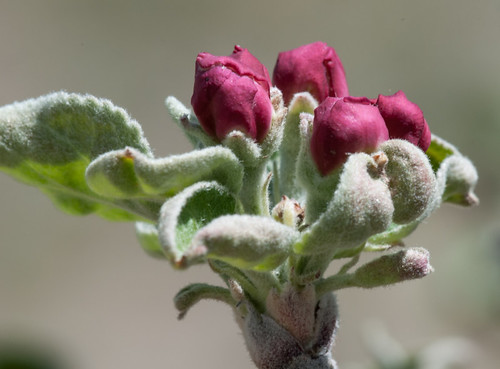How to Pollinate Apple Trees
Published by Nanni on Friday, August 10, 2012
Photo credit by dagnyg
When it comes pollination, an apple tree must receive pollen from another kind of apple tree in order to produce fruit. Even if you have a single tree in your yard, pollination is still possible as bees will fly a lengthy distance from one tree to another in order to find a pollen source. Therefore, if you live in an area that is fairly well populated, you can be assured that your tree will in all likelihood be pollinated. You can even add the apple tree’s ornamental relative, the crabapple tree, in your yard to assist in your pollination efforts. Varieties of blossoming crabapple trees such as Snodrift and Manchurian are good pollinizers for an apple tree.
If you live in an area where there is a small percentage of gardens, then the best method for pollination is to plant two or more varieties of apple trees which blossom at approximately the same time. Therefore, you’ll want to select trees that grow best in your particular area of the country. Apple trees that yield varieties of apples such as Golden Delicious, Cortland and Honeycrisp grow well in most regions of the U.S.
With regards to taste, if you want a tart apple, Granny Smith is recommended. On the other hand, if you like a sweet apple, then Honey Crisp might be the choice for you. For a fruit that works well in a pie, Golden Delicious is a good selection.
Certain diseases can attack an apple crop such as apple scab, cedar apple rust, fire blight and powdery mildew. Apples that are more disease resistant and minimize the necessity to spray include such varieties as Freedom, Liberty and Enterprise. These are good apples to pick for pollination as well as they reduce, as stated, the need to spray and therefore attract more bees.
If you have an apple crop or wish to establish an orchard, then it’s a good idea to stagger the crop. In other words, grow and pollinate trees that are early bloomers followed by trees that blossom in the middle part and tail end of the growing period. By using this method, your apple harvest will be spread out so you’ll be able to enjoy more fresh fruit during this time. Also, the continual flowering of the trees during the season adds to the aesthetics of your landscape as well as results, as indicated, in better pollination. Therefore, to ensure pollination, you’ll need to grow more than one kind of apple tree in each seasonal planting per growing period.
Apples that can be grown and pollinated successfully earlier in the growing season include such varieties as State Fair, Beacon and Ginger Gold. Apples that blossom in mid-season include Cortland, Gala, Honeycrisp, McIntosh and Liberty. Golden Delicious, Rome and Northern Spy are apple varieties that grow later in the season.
Nevertheless, be aware that some apple trees can’t be depended on for pollination. This is because their pollen is sterile. As a result, varieties such as Jonagold, Winesap and Stayman can’t be used to pollinate other trees.
To cut down on the possibility of disease, such as powdery mildew, make sure your plants are planted in well-drained and fertile soil that receives a good amount of sun. Plant trees within 100 feet from one another if you want to make sure that pollinators such as bees, flies or wasps do their job and pollinate each tree. The best time to plant apple trees in the North is in the spring while fall is the best time for planting if you wish to grow apple trees in the southernmost areas of the U.S. Choose trees younger than three years old as they’re simpler to incorporate and establish into your landscape.
Generally, before selecting any tree for your yard, make certain that you are aware what the guidelines are for pollination. Remember that all varieties of apple trees need some cross-pollination. The honeybee is the most important carrier of pollen; therefore, reducing your use of sprays can help in this regard. Removal of dandelions is helpful too as the blooms attract bees.
To pollinate apple trees successfully then, consider the area where you’re planting your trees, glean some knowledge about the apple varieties you’re wishing to plant and make use of the resources Mother Nature provides—such as bees—to aid in your pollination goals and efforts.
 | Posted in »
| Posted in »

0 comments: Responses to “ How to Pollinate Apple Trees ”